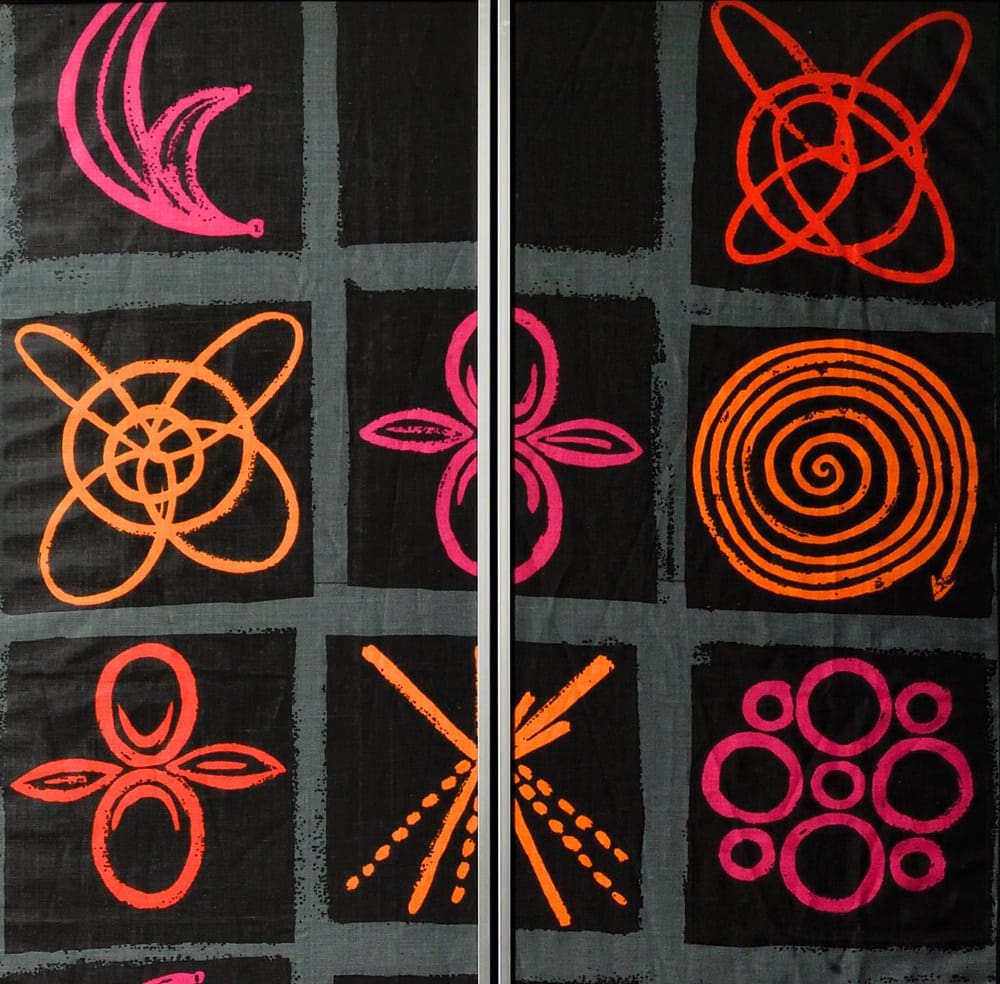Svedberg invented the analytical ultracentrifuge, and that’s my background—ultracentrifugation. The design is a combination of science and art—it’s an accessible beauty. These are fundamental physics and chemistry concepts, but you don’t even have to know anything about science to look at it and think it’s cool.”
Karen Fleming, Professor, Department of Biophysics
Theodor Svedberg won the Nobel Prize in chemistry in 1926 for inventing the analytical ultracentrifuge, a tool that measures the size of molecules. But he also had an artistic side. In 1955, when he couldn’t find suitable fabric for new drapes for the Gustav Werner Institute, he simply designed his own. At a 2009 conference in Sweden commemorating the 125th anniversary of Svedberg’s birth, Professor Karen Fleming and her colleagues were each given a single black linen square with renderings of subatomic concepts like a Bohr orbital, mass spectrometry, or a Schrödinger atom—remnants of Svedberg’s remarkable curtains. Fleming was so taken with the fabric that she found a company that still manufactured it, and ordered several yards. “Atomics” now lines the bookcase in her office.






